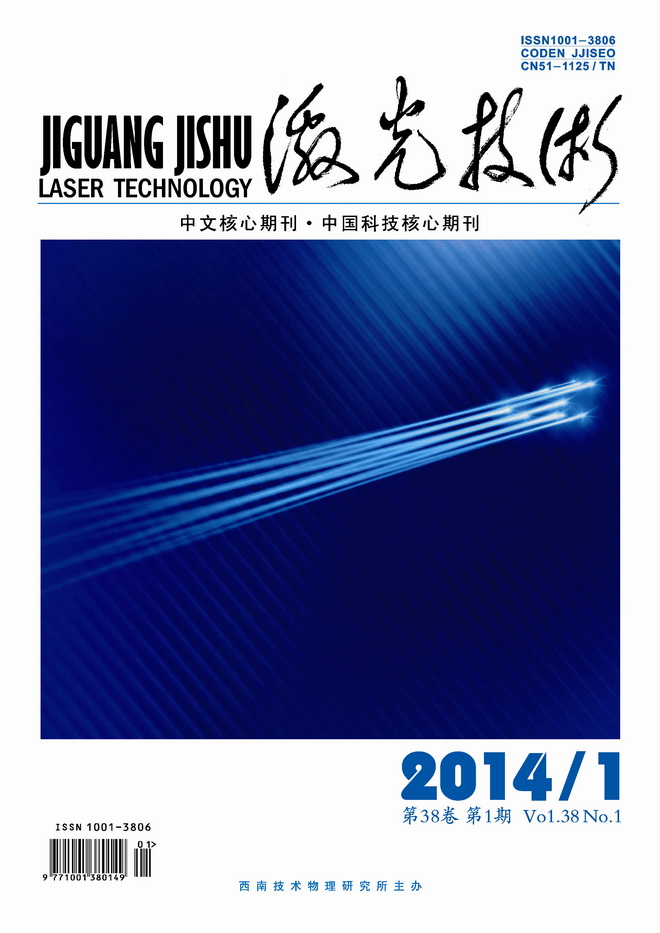Diffraction computation with frequency shift interpolation based on theory of angular spectrum
-
Corresponding author:
LI Chongguang, 2544248546@qq.com
;
-
Received Date:
2013-04-23
Accepted Date:
2013-05-28
-
Abstract
In the discrete numerical calculation of diffraction distribution, the total number of sampling points following sampling theorem increases with the augment of propagating distance. Although the traditional zero-padding method resolves this problem, the calculation load increases inevitably and PC's memory can not afford. A novel frequency shift interpolation, i.e., utilizing frequency spectrum calculation after shift in Fourier domain, was proposed. In the method, more sufficient spectrum components can be got without the increase of sampling number. A complete diffraction distribution is accomplished by splicing the light field obtained by spectrum of each shifted interpolation. The results show that the proposed method successfully evades the great sampling number caused by larger diffracting distance. Comparing with traditional zero-padding method, calculation load is decreased notably and the requirement to memory in numerical calculation is depressed.
-

-
References
|
[1]
|
WOLF B. Principles of optics[M].7th ed.Beijing: Publishing House of Electronics Industry, 2005:342(in Chinese). |
|
[2]
|
GOODMAN J W. Introduction to fourier optics[M].3rd ed.Beijing: Publishing House of Electronics Industry, 2011:46-61(in Chinese). |
|
[3]
|
LI J Ch, XIONG B H. Information optics theory and calculation[M]. Beijing: Science Press, 2009:93-137(in Chinese). |
|
[4]
|
ZHANG B W, MA Y, ZHANG P P, et al. Simulation of Gaussian laser standing wave based on diffraction by straight edge[J]. Laser Technology, 2012, 36(6):810-813(in Chinese). |
|
[5]
|
LI J Ch. FFT computation of angular spectrum diffraction formula and its application in wavefront reconstruction of digital holography[J]. Acta Optica Sinica, 2009, 29(5):1163-1167(in Chinese). |
|
[6]
|
MUFFOLETTO R P, TYLER J M, TOHLINE J E. Shifted Fresnel diffraction for computational holography[J]. Optics Express, 2007, 15(9):5631-5640. |
|
[7]
|
KOZACKI T, FALAGGIS K, KUJAWINSKA M. Computation of diffracted fields for the case of high numerical aperture using the angular spectrum method[J]. Applied Optics, 2012, 51(29):7080-7088. |
|
[8]
|
SU X Y, LI J T. Information optics[M]. Beijing: Science Press, 1999:34-47(in Chinese). |
|
[9]
|
LOBAZ P. Reference calculation of light propagation between parallel planes of different sizes and sampling rates[J]. Optics Express, 2010, 19(1):32-39. |
|
[10]
|
LIU Y J. Diffraction field of orthogonal cosine-gratings[J]. Laser Technology, 2013, 37(1):114-117(in Chinese). |
|
[11]
|
CHANG Sh, SANG Zh W, ZHUANG L. Calculation and analysis of spherical aberration on Gaussian image plane based on diffraction theory[J]. Laser Technology, 2012, 36(3):405-407(in Chinese). |
-
-
Proportional views

-

 Map
Map



 DownLoad:
DownLoad: